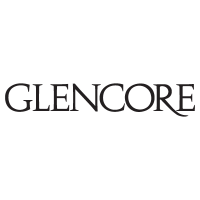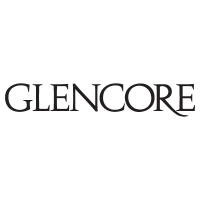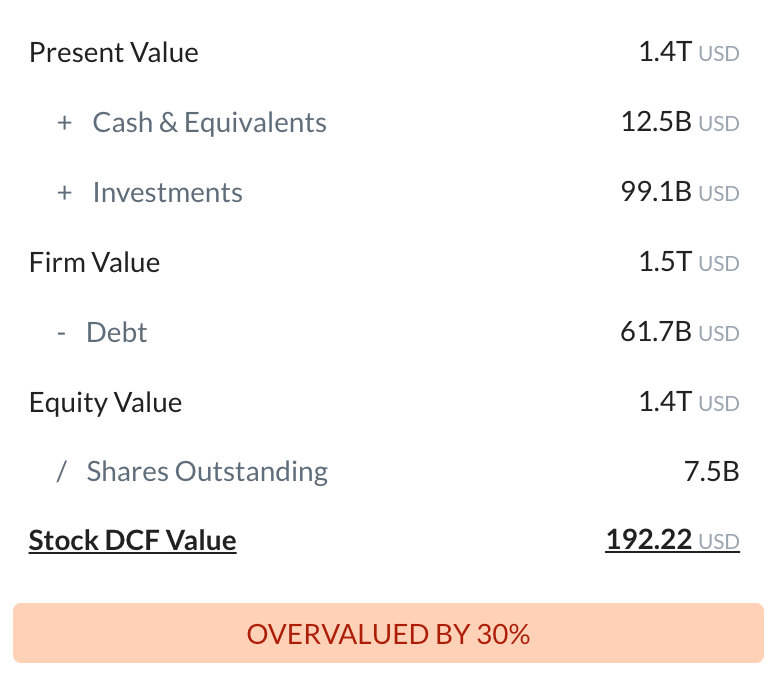
Glencore PLC
LSE:GLEN

Intrinsic Value
The intrinsic value of one
 GLEN
stock under the Base Case scenario is
1 073.67
GBX.
Compared to the current market price of 255.75 GBX,
Glencore PLC
is
Undervalued by 76%.
GLEN
stock under the Base Case scenario is
1 073.67
GBX.
Compared to the current market price of 255.75 GBX,
Glencore PLC
is
Undervalued by 76%.
The Intrinsic Value is calculated as the average of DCF and Relative values:

Valuation History
Glencore PLC

Fundamental Analysis


Revenue & Expenses Breakdown
Glencore PLC

Balance Sheet Decomposition
Glencore PLC

| Current Assets | 55.9B |
| Cash & Short-Term Investments | 2.4B |
| Receivables | 18.8B |
| Other Current Assets | 34.8B |
| Non-Current Assets | 74.5B |
| Long-Term Investments | 9.8B |
| PP&E | 50.2B |
| Intangibles | 5.9B |
| Other Non-Current Assets | 8.6B |
Free Cash Flow Analysis
Glencore PLC

| USD | |
| Free Cash Flow | USD |
Earnings Waterfall
Glencore PLC

|
Revenue
|
230.9B
USD
|
|
Cost of Revenue
|
-224.3B
USD
|
|
Gross Profit
|
6.7B
USD
|
|
Operating Expenses
|
-2.4B
USD
|
|
Operating Income
|
4.3B
USD
|
|
Other Expenses
|
-5.9B
USD
|
|
Net Income
|
-1.6B
USD
|
GLEN Profitability Score
Profitability Due Diligence

Glencore PLC's profitability score is 49/100. The higher the profitability score, the more profitable the company is.

Score
Glencore PLC's profitability score is 49/100. The higher the profitability score, the more profitable the company is.
GLEN Solvency Score
Solvency Due Diligence

Glencore PLC's solvency score is 38/100. The higher the solvency score, the more solvent the company is.

Score
Glencore PLC's solvency score is 38/100. The higher the solvency score, the more solvent the company is.
Wall St
Price Targets
GLEN Price Targets Summary
Glencore PLC

According to Wall Street analysts, the average 1-year price target for
 GLEN
is 448.8 GBX
with a low forecast of 368.65 GBX and a high forecast of 504 GBX.
GLEN
is 448.8 GBX
with a low forecast of 368.65 GBX and a high forecast of 504 GBX.
Dividends
Current shareholder yield for  GLEN is
.
GLEN is
.
Shareholder yield represents the total return a company provides to its shareholders, calculated as the sum of dividend yield, buyback yield, and debt paydown yield. What is shareholder yield?
The intrinsic value of one
 GLEN
stock under the Base Case scenario is
1 073.67
GBX.
GLEN
stock under the Base Case scenario is
1 073.67
GBX.
Compared to the current market price of 255.75 GBX,
 Glencore PLC
is
Undervalued by 76%.
Glencore PLC
is
Undervalued by 76%.
























































 You don't have any saved screeners yet
You don't have any saved screeners yet